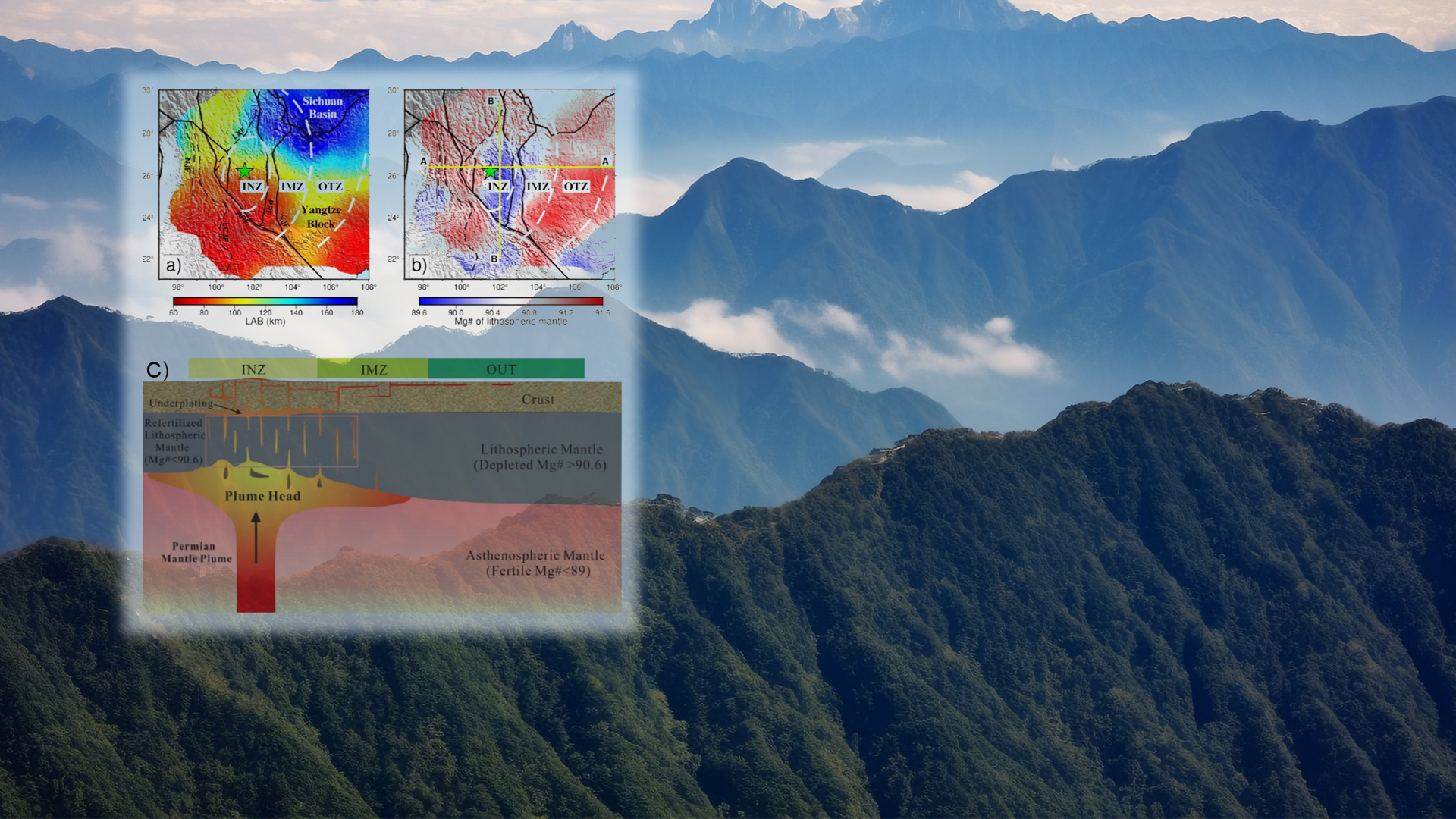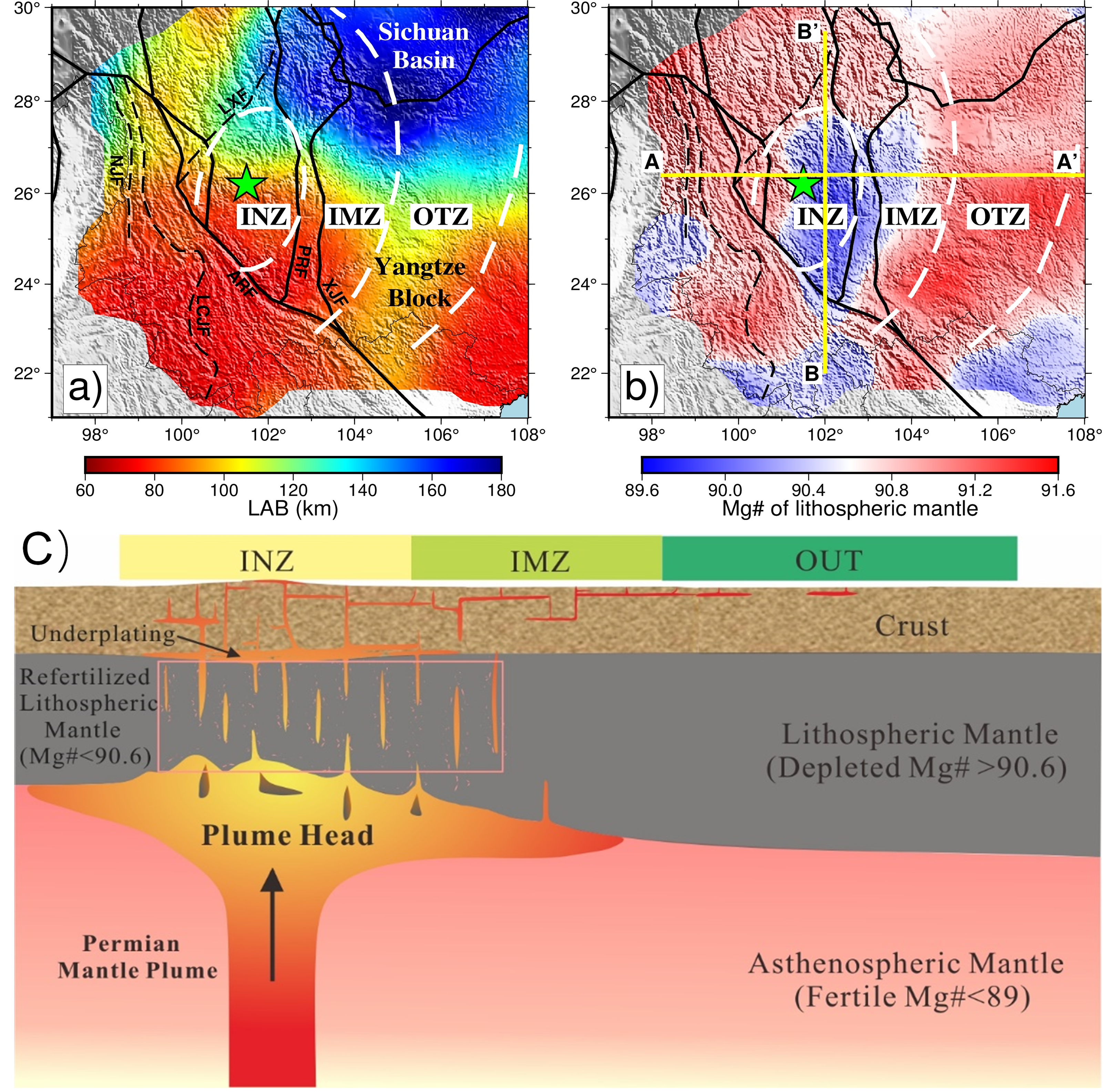Large igneous provinces (LIPs) are characterized by voluminous emplacements of primarily mafic extrusive and intrusive rocks in a short period of time (< 5 Myr). As such, many LIPs are thought to have been caused by mantle plumes, which brought deep mantle materials and energy to the surface, and contributed to global environmental catastrophes. However, how the plume modifies the overlying lithosphere, particularly its compositional structure, remains uncertain.

Associate Professor Zhen Guo’s research group from the Department of Ocean Science and Engineering at the Southern University of Science and Technology (SUSTech) has recently revealed the mantle plume-lithosphere interactions beneath the Emeishan large igneous province.
Their paper, entitled “Mantle Plume-Lithosphere Interactions Beneath the Emeishan Large Igneous Province”, has been published in the Nature Index journal Geophysical Research Letters.
The Late Permian Emeishan large igneous province (ELIP) is a well-recognized LIP in China and has been linked to the end-Guadalupian mass extinction. It is located in the westernmost part of the Yangtze Block and adjacent to the southeastern margin of the Tibetan Plateau, SW China. The ELIP is structurally divided into inner (INZ), intermediate (IMZ), and outer zones (OTZ) (Figure 1a) according to the amount of crustal uplift inferred from the erosional state of the Maokou limestone.
Prof. Guo’s group jointly inverted new Rayleigh wave dispersion data, surface heat flow, geoid height, and elevation data with a probabilistic inversion method to obtain a thermochemical model of the lithosphere and sublithospheric mantle beneath the ELIP and surrounding areas. The results clearly correlate the lithospheric composition with the ELIP’s concentric zones (Figure 1b). They suggest that the bulk fertile feature (not depleted by melt extraction) of the lithospheric mantle in the vicinity of the ELIP’s inner zone was caused by the plume-derived fertile magmas, which infiltrated into the ambient depleted (deficient in minerals extracted by partial melting of the rock) lithospheric mantle and chemically refertilized it by melt-rock interaction (Figure 1c).

Figure 1. (a) Predicted lithosphere-asthenosphere boundary depth. (b) Bulk Mg# of the lithospheric mantle. (c) Cartoon showing the interaction between the Permian mantle plume with the lithospheric mantle and crust beneath the ELIP, resulting in a refertilized lithospheric mantle.
Although the mean composition of the lithospheric mantle imaged today is primarily the remnant of the magmatic processes related to the impingement of the ancient plume, the present-day lithospheric thickness has been mainly influenced by subsequent tectonic events. The present-day temperature model reveals a thin lithosphere and a high-temperature anomaly beneath the southwestern ELIP, suggesting a large ongoing asthenospheric upwelling (Figure 1a). This research improves the understanding of the physicochemical interactions between the lithosphere and ancient plume and contributes to the knowledge of the nature of LIPs.
Research Assistant Professor Anqi Zhang from SUSTech is the first author of this paper. Associate Professor Zhen Guo from SUSTech is the corresponding author. The co-authors include Professor Yingjie Yang from SUSTech, Professor Juan Carlos Afonso from the University of Twente, and J. Gregory Shellnutt from National Taiwan Normal University. The Department of Earth and Space Sciences at SUSTech is the first affiliation of this paper.
This work was supported by the National Natural Science Foundation of China (NSFC).
Paper link: https://doi.org/10.5281/zenodo.7644990
To read all stories about SUSTech science, subscribe to the monthly SUSTech Newsletter.
Proofread ByAdrian Cremin, Yingying XIA
Photo ByDepartment of Ocean Science and Engineering